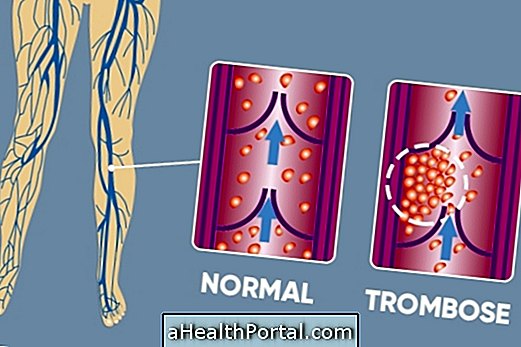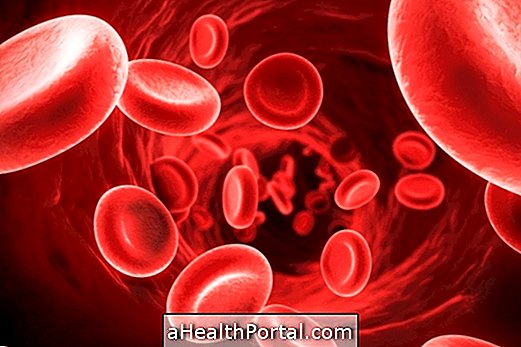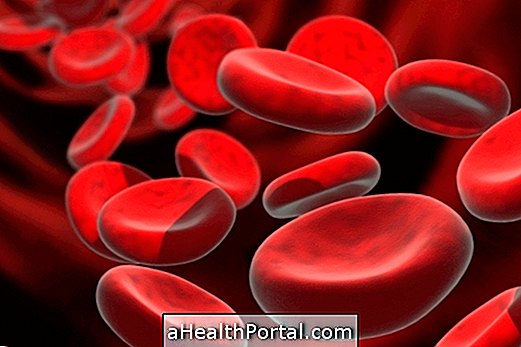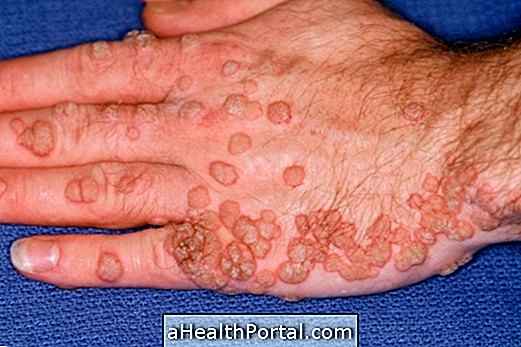Hemophilia is a genetic and hereditary disease, that is, it is passed from parents to children, characterized by an increased risk of prolonged bleeding, which may be external, with wounds and cuts that do not stop bleeding, or internal bleeding gums, in the nose, in the urine or in the stool, or hematomas by the body, for example.
This happens because the person with hemophilia is born with a deficiency or low activity of Factor VIII or Factor IX in the blood, which are essential for coagulation, caused by genetic alterations that interfere in the production of these proteins and give rise to haemophilia type A or type B.
Although it has no cure, this disease has treatment, which is done with periodic injections with the clotting factor that is lacking in the body, to prevent bleeding or whenever there is a hemorrhage, which needs to be resolved quickly. Learn more details on how hemophilia treatment is done.

1. There are 2 types of hemophilia.
TRUTH . Hemophilia can occur in 2 forms, which, despite presenting similar symptoms, are caused by a lack of different blood components:
- Hemophilia A: is the most common type of hemophilia, characterized by deficiency in coagulation factor VIII;
- Hemophilia B: causes changes in the production of factor IX of coagulation, also known as Christmas disease.
Clotting factors are proteins present in the blood, which are activated whenever the blood vessel ruptures, so that the bleeding is contained. Therefore, people with hemophilia suffer from bleeding that takes much longer to be controlled.
There are deficiencies of other coagulation factors, which also cause bleeding and may be confused with hemophilia, such as factor XI deficiency, popularly known as type C hemophilia, but differing in the type of genetic alteration and form of transmission.
2. Hemophilia is more common in men.
TRUTH . Coagulation factors deficient in hemophilia are present on the X chromosome, which is unique in man and double in woman. Thus, in order to have the disease, the man only needs to receive 1 affected X chromosome from the mother, whereas for a woman to develop the disease, she must receive the 2 affected chromosomes from the father and the mother, which is more difficult.
If the woman has only 1 affected X chromosome, inherited from one of the parents, she will be a carrier, but will not develop the disease, because the other X chromosome compensates for the deficiency, however, has a 25% chance of having a child with this disease.
3. Hemophilia is always hereditary.
MYTH . In about 30% of cases of hemophilia there is no family history of the disease, which may be the result of a spontaneous genetic mutation in the person's DNA.
In this case, it is considered that the person has acquired hemophilia, but that, nevertheless, can transmit the disease to the children, as well as any other person with hemophilia.
4. Hemophilia is contagious.
MYTH . Hemophilia is not contagious, even if there is direct contact with the blood of a person carrying it or even a transfusion, since this does not interfere with the formation of the blood of each person by the bone marrow.

5. Blood test confirms hemophilia.
TRUTH . The diagnosis of hemophilia is made by the hematologist, who asks for tests that evaluate coagulation and blood components, such as coagulation time, coagulation factors, and the amount of these factors in the blood, and the evaluation should be done whenever there is bleeding history easily, or for no apparent reason.
This diagnosis can be made at any age, and can be done even in the maternal uterus by extracting biopsy samples from the chorionic villi, amniocentesis or cordocentesis, through which the child's DNA can be analyzed.
6. Hemophilia is always severe.
MYTH . There are 3 stages for hemophilia, according to the severity of blood changes and bleeding:
- Mild hemophilia : in which the function of clotting factors is only decreased (activity between 5 and 40%), and has little risk of bleeding, more present in surgery, accidents or dental extraction, for example;
- Moderate haemophilia : has a significant decrease in coagulation factors (activity between 2 and 5%), being more likely to have spontaneous bleeding, such as the appearance of intramuscular hematoma or joint, for example;
- Severe haemophilia : Coagulation factors are virtually absent (activity less than 1%), and there are high chances of bleeding, especially in the skin, joints and muscles, due to strokes or spontaneously, which occur about 2 to 5 times a month.
The more severe hemophilia, the earlier it is usually discovered, and generally, people with mild hemophilia may only discover the disease in adulthood, or even find out, whereas moderate haemophilia is diagnosed in children around 6 years of age. age and severe hemophilia is usually discovered in the first months of life.
7. The person with hemophilia can have a normal life.
TRUTH . Nowadays, in the preventive treatment, with the replacement of coagulation factors, the person with hemophilia can lead a normal life, including practicing sports.
In addition to treatment for the prevention of accidents, treatment can be done when there is bleeding, through the injection of coagulation factors, which facilitates blood clotting and prevents severe bleeding, and is done according to the hematologist's advice.
In addition, whenever the person is to perform some type of surgical procedure, including dental extractions and fillings, for example, it is necessary to make doses for prevention.
Hemophilia became known as a disease of kings.
TRUTH . This disease was very common in European royal families, since it was common for the marriage between relatives, which increases the chances of the affected genes being transmitted throughout the generations.
The first account of this disease was in a Russian imperial family, from the Romanov Dynasty, in which the legend originated that the healer Rasputin cured the heir to the throne, Prince Alexei, which is just a legend, as there is still no cure for hemophilia.

9. Hemophiliac should not take ibuprofen.
TRUTH. Medications such as Ibuprofen or acetylsalicylic acid should not be ingested by people diagnosed with hemophilia because they may interfere with the blood clotting process and may favor bleeding, even if the clotting factor has been applied.
10. The person with hemophilia can not have children.
MYTH. People diagnosed with hemophilia, whether male or female, may have children, but it is necessary to consider some things before planning pregnancy, such as:
- The chance of having a hemophiliac child, which is usually about 50% when one parent is hemophiliac;
- The consequences of the disease for the child;
- How hemophilia treatment is done and associated costs;
- How pregnancy and childbirth planning should be done to reduce risks to both the mother, the hemophilic, and the baby.
From the evaluation of these factors by the parents, one can plan the pregnancy if this is the will. However, in most cases, the couple chooses to adopt a child or perform in vitro fertilization techniques, such as:
- In vitro fertilization with pre-implantation diagnosis, in which the woman's eggs are fertilized with the sperm of the partner and in the first phase of development, the embryos are analyzed and only those that do not have the hemophilia gene are implanted in the woman's uterus;
- In vitro fertilization with eggs donated by a healthy woman who does not have hemophilia, ensuring that the child does not have hemophilia and does not carry the gene.
In addition to these techniques, it is possible to choose a sperm selection, that is, from the analysis of the sperm of the man, are chosen spermatozoa that have only one X chromosome, ensuring that a female child will be generated that may be a carrier or not of hemophilia. The sperm harvested is fertilized and re-implanted in the uterus.
11. The hemophiliac can not make tattoos or surgeries.
MYTH. The person diagnosed with hemophilia, regardless of type and severity, may make tattoos or surgical procedures, however, the recommendation is that they communicate their condition to the professional and administer coagulant factor before the procedure, avoiding large bleeding, for example.
In addition, in the case of tattoos, some people with hemophilia reported that the healing process and pain after the procedure were minor when they applied the factor before performing the tattoo. It is also essential to look for an establishment regularized by ANVISA, clean and with sterile and clean materials, avoiding any risk of complication.























